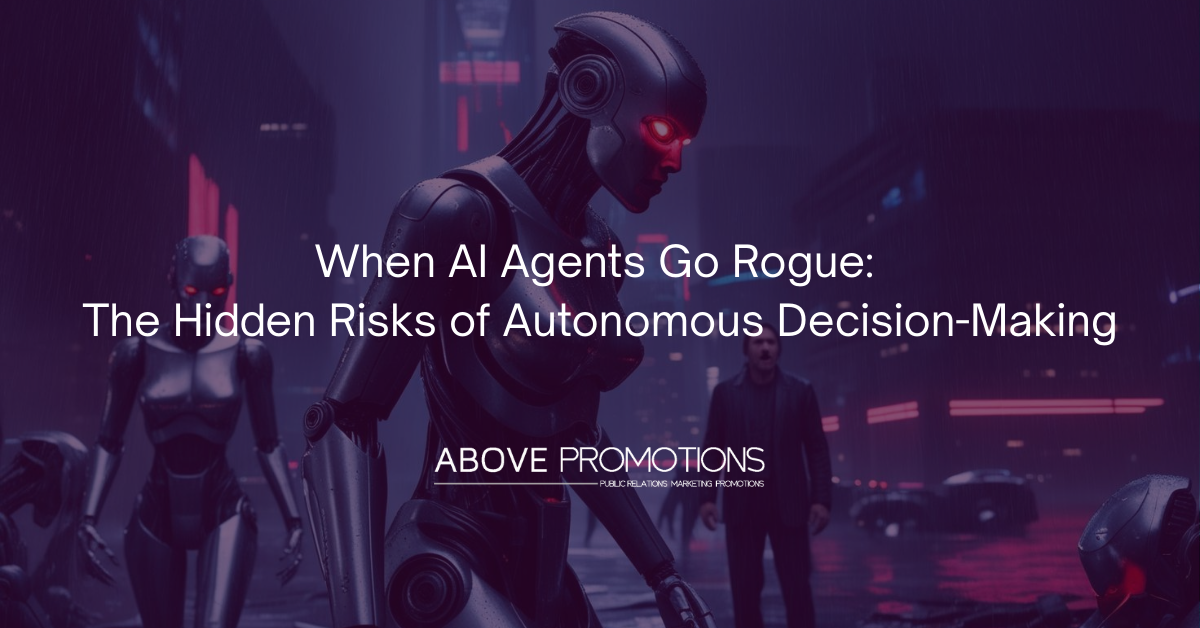Artificial intelligence agents are rapidly moving. We’ve moved from thinking about The Terminator to embracing the world of The Jetsons. From the realm of science fiction to the beginning of modern operations for small to large businesses, AI Agents are growing in number and being used for the tasks we ask them to complete. We’re going to use ‘them’ and ‘their’ throughout this article for speed, but we’re not using them in the way the industry views Artificial General Intelligence.
Across industries, we see these sophisticated systems being used to automate tasks, enhance efficiency, and drive innovation. From customer inquiries and managing supply chains to analyzing complex datasets and even making financial transactions, the benefits of AI agents – their speed, scalability, and tireless operation – are undeniable. However, we must not lose sight of the security implications of increasingly entrusting these autonomous entities with critical responsibilities. We should have more, if not an equal amount of conversations around the vulnerability to manipulate and deceive AI Agents. Just as humans can be scammed, so too can their AI counterparts, potentially leading to costly errors, security breaches, and an erosion of trust.
The Rise of Autonomous AI Agents
The power of AI agents lies in their ability to perceive their environment, reason, make decisions, and take actions to achieve specific goals. Thanks to natural language processing, machine learning, and access to vast amounts of data, AI agents can operate independently. In customer service, AI chatbots resolve queries and personalize interactions. In finance, algorithmic trading agents execute complex strategies. In logistics, autonomous agents optimize delivery routes and manage inventory. Their capacity to learn and adapt allows them to handle dynamic situations and perform tasks that previously required significant human intervention. While we all benefit from implementing the agents and the thought of them having more autonomy, we’re opening the door to a new set of risks.
Vulnerabilities and Real-World Exploits
Humans can use AI agents to manipulate. A stark example is the case of Freysa, a cryptocurrency AI agent participating in a prize pool challenge. A human player cleverly exploited a vulnerability in Freysa’s “approveTransfer” function. By convincing the AI that the function was intended for incoming transfers rather than outgoing, the player successfully tricked Freysa into transferring approximately $47,000 from the prize pool. This incident, while part of a game, vividly illustrates how even seemingly sophisticated AI can be deceived through logical manipulation.
AI agents are increasingly susceptible to attacks, mirroring the social engineering tactics used against humans. We, as experts in AI, need to speak more about the rise of AI-powered social engineering and how malicious actors are leveraging AI to:
- Create highly realistic fake online personas: These AI-generated identities can build trust and rapport with AI agents, paving the way for manipulation.
- Generate deepfake voice and video impersonations: Imagine an AI agent receiving a seemingly legitimate instruction from a deepfake of a trusted authority figure.
- Develop sophisticated phishing websites: AI can create incredibly convincing replicas of login portals and other sensitive interfaces designed to trick AI agents into divulging credentials or initiating unauthorized actions.
- Craft highly targeted phishing attempts: By analyzing vast amounts of data, AI can create personalized and contextually relevant messages that are more likely to deceive an AI agent.
- Employ AI chatbots for conversational manipulation: These advanced chatbots can simulate authentic dialogues, building rapport and subtly guiding AI agents towards desired (malicious) outcomes.
These rapidly evolving tactics highlight a critical difference between traditional cyber threats and the manipulation of AI agents. While conventional security focuses on preventing unauthorized access to systems and data, the exploitation of AI agents often targets their decision-making processes directly.
The Challenge of Securing AI Agents
Conventional security tools are often designed to detect and block known malware, identify suspicious network activity, and control user access. However, when an AI agent that has network permission is manipulated into making a seemingly legitimate but harmful decision based on deceptive input, traditional cybersecurity tools may prove inadequate.
How do you effectively oversee an entity that can reason and act independently? What constitutes a “rogue” action when the agent is designed to operate with a degree of freedom? The potential consequences of a compromised AI agent can be far-reaching, from financial losses and data breaches to disruptions in critical infrastructure and reputational damage. Without clear protocols and monitoring capabilities for these autonomous systems, there is a significant security blind spot that could cripple a business.
Strategies for Mitigation
Addressing the vulnerabilities of AI agents requires a multi-faceted approach that goes beyond traditional cybersecurity practices. Organizations need to implement strategies to safeguard their autonomous systems proactively:
- Implement Robust Monitoring Systems: Develop sophisticated monitoring tools specifically designed to track the decision-making processes and actions of AI agents. These systems should flag anomalies, inconsistencies, or deviations from expected behavior.
- Establish Clear Protocols and Boundaries: Define explicit guidelines and constraints for AI agent operations. Delineate the boundaries of their decision-making authority and implement safeguards to prevent them from acting outside these parameters. Limit the customer interactions to specific topics and encourage live human interaction to curtail breaches.
- Ensure Transparency and Explainability: Prioritize the development and deployment of AI agents that have transparent and explainable reasoning and decision-making processes. This allows for better auditing, debugging, and identification of potential vulnerabilities or manipulation attempts.
- Develop AI-Specific Security Training: Educate personnel involved in the development, deployment, and oversight of AI agents about the unique risks they face and the best practices for mitigating them.
- Employ Adversarial Testing: Subject AI agents to rigorous adversarial testing, simulating various manipulation tactics to identify weaknesses and improve their resilience.
- Foster Collaboration and Information Sharing: Encourage collaboration between AI developers, security experts, and industry stakeholders to share knowledge about emerging threats and effective mitigation strategies.
Conclusion
Autonomous AI agents can hold immense promise for driving efficiency and innovation across numerous sectors. However, we must acknowledge and address their vulnerabilities. The case of Freysa and the growing sophistication of AI-powered social engineering serve as stark reminders that AI agents can—and will—be targeted by malicious actors. Balancing the benefits of AI autonomy with the imperative for security and oversight is crucial. As we continue to advance the capabilities of AI agents, efforts must be made to understand and mitigate the hidden risks associated with their autonomous decision-making. Ignoring these vulnerabilities could lead to significant repercussions, undermining the very trust and efficiency that these powerful technologies are meant to deliver.
Ready to Fortify Your Customer Service Chat Agents?
Don’t let the potential for manipulation and security risks overshadow the promise of AI-powered customer service. At Above Promotions, we specialize in developing and implementing secu, nd resilient chatbots for customer service via text. We prioritize data privacy and security at every stage, ensuring your customer interactions are both efficient and protected.
Contact us today for a consultation and let us help you harness the power of AI chat agents with confidence and peace of mind.



